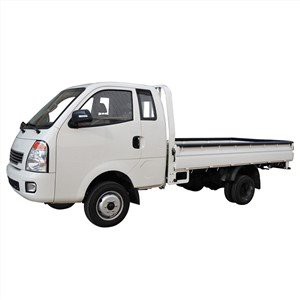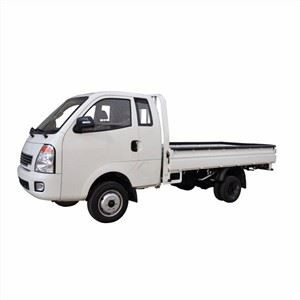Understanding Leach Parts: A Comprehensive Guide
Introduction
Leach parts play a crucial role in various industries, particularly in manufacturing, electronics, and environmental science. Understanding what leach parts are, how they function, and their relevance can increase efficiency and sustainability in various processes. This article aims to delve into the meaning of leach parts, their applications, and practical insights for optimizing their use.
What Are Leach Parts?
Leach parts refer to components that enable the extraction of soluble materials from solid substances through a process known as leaching. This process is commonly utilized in mining, chemical engineering, and environmental remediation, where the goal is to separate valuable elements from ores or contaminated soil.
The Leaching Process Explained
In leaching, a solvent extracts specific elements or compounds from a solid material. This extraction can occur in various forms, such as:
- Liquid-Liquid Leaching: Involves another liquid solvent.
- Solid-Liquid Leaching: Uses a liquid solvent to draw out soluble components from a solid.
- Gas-Liquid Leaching: Involves gases interacting with liquid to aid extraction.
Types of Leach Parts
Leach parts can be categorized based on their application in different industries.
1. Mining Leach Parts
In the mining sector, leach parts are vital for extracting metals such as gold, copper, and silver from ores.
| Metal | Common Leach Part Used | Leaching Method |
|---|---|---|
| Gold | Cyanide Solution | Cyanide Leaching |
| Copper | Sulfuric Acid | Heap Leaching |
| Silver | Thiosulfate | Thiosulfate Leaching |

2. Environmental Leach Parts
In environmental science, leach parts are utilized for soil remediation to remove pollutants from contaminated land. This process includes:
- Bioremediation: Using microbes to break down contaminants.
- Phytoremediation: Utilizing plants to absorb harmful substances from the soil.
Applications of Leach Parts
1. Gold Extraction
In gold mining, leach parts play a significant role. The cyanide leaching process extracts gold from ore by dissolving it into a solution, allowing for a more efficient recovery. Proper management of leach parts in this process is crucial, given the toxic nature of cyanide.
2. Electronic Waste Recycling
Leach parts aid in recovering precious metals from electronic waste. By using selective leaching solutions, valuable materials can be effectively extracted, fostering a sustainable recycling environment and minimizing landfill waste.
3. Agriculture
In agriculture, leach parts can enhance soil nutrient availability. Understanding nutrient leaching can help farmers apply fertilizers more efficiently, thus reducing excess runoff and environmental impact.
Choosing the Right Leach Parts
Selecting the appropriate leach parts hinges on several critical factors:
1. Type of Material
The material to be leached will determine the solvent or technique used. Understanding the chemical properties of both the leach part and the target material is essential.
2. Environmental Regulations
Adhering to local regulations concerning leach part chemicals is crucial. Compliance ensures safety and sustainability while minimizing legal risks.

3. Cost-Effectiveness
The economic aspect cannot be overlooked. Evaluating the cost of leach parts in relation to the benefits gained from extraction can guide better decision-making in both industrial and agricultural contexts.
Best Practices for Using Leach Parts
1. Regular Maintenance
Regular inspection and maintenance of leach parts increase their lifespan, improve efficiency, and minimize the likelihood of leaks or failures.
2. Monitoring Extracted Components
Continuous monitoring of the leached components helps in understanding the effects of the process, allowing for adjustments to optimize extraction.
3. Implementing Safety Protocols
Given that many leaching processes involve hazardous materials, implementing robust safety protocols is essential. Training employees and having clear emergency response plans can mitigate potential risks.
Common Challenges in Using Leach Parts
1. Material Compatibility
Not all materials react well with every leaching agent. Understanding compatibility is vital to avoiding unwanted reactions or incomplete leaching processes.
2. Environmental Concerns
The leaching process often involves chemicals that could potentially harm the environment. This necessitates careful management and consideration of eco-friendly alternatives.
3. Efficiency Challenges
Enhancing the efficiency of leach parts in the extraction process can be difficult. Ensuring the right conditions and using the correct leaching agent can significantly impact results.
The Future of Leach Parts
With increasing environmental awareness and technological advancements, the future of leach parts looks promising. Innovations in biodegradable leaching agents and more effective separation technologies are paving the way for more sustainable practices across industries.
1. Bioleaching
Bioleaching uses biological agents, such as bacteria, to extract metals from ores. This method is gaining popularity due to its lower environmental impact and potential for sustainable mining practices.
2. Enhanced Recycling Methods
Improvements in leach parts technology are making it feasible to recover more valuable materials from electronic waste, contributing to a circular economy.
FAQs about Leach Parts
1. What are leach parts used for?
Leach parts are primarily used in the extraction of soluble materials from solid substances across various industries, including mining, electronics recycling, and agriculture.
2. How do I choose the right leach part?

Choosing the right leach part depends on factors like the material being leached, environmental regulations, and cost-effectiveness.
3. Are there any environmental concerns with leach parts?
Yes, many leaching agents can be hazardous. It’s crucial to manage their use responsibly to minimize environmental impact and adhere to regulations.
4. What are some best practices for using leach parts?
Best practices include regular maintenance, monitoring extracted components, and implementing safety protocols to mitigate risks.
5. How does leach part technology influence recycling efforts?
Advancements in leach part technologies are improving the efficiency of metal recovery from electronic waste, enhancing recycling efforts and sustainability.
6. What is bioleaching?
Bioleaching is a process that utilizes biological agents, such as bacteria, to extract metals from ores in a more environmentally friendly manner.
